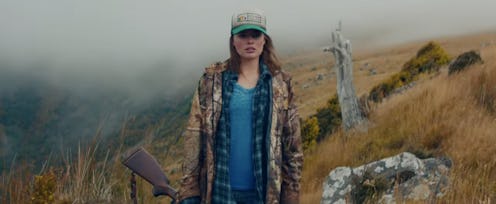Entertainment
Will The World End Like 'Z For Zachariah'?

In Robert C. O'Brien's 1974 science fiction novel, Z for Zachariah, there are but three survivors of the apocalypse: Ann Burden, John Loomis, and Loomis's partner Edward. Their number rapidly dwindles to two when Loomis kills Edward (Ann's family has already disappeared on a search and rescue mission). Both the novel and its recent film adaptation take place just after a catastrophic nuclear war that has destroyed most of humanity and sickened the rest. It's a scenario that spawned innumerable fallout shelters, morbid theories of "mutually assured destruction," and capture the imaginations of sci-fi writers and enthusiasts for much of the Cold War — a sentiment that still lingers today as seen in the revivals of Cold War-era stories like The Man From U.N.C.L.E. and Pawn Sacrifice. But could the apocalypse in Z for Zachariah really happen?
Well, it definitely wouldn't be identical. In the film, another man — Caleb (Chris Pine), a mysterious and charismatic stranger who Ann (Margot Robbie) nurses back to health just as she did Loomis — arrives. There's an intense claustrophobia in the scenario. Ann inhabits a valley that proves an unexpected oasis from radiation, while Loomis, a scientist, arrives armed with a decontamination suit from a research facility in Ithaca. And while the Cold War began to crumble with the fall of the Berlin Wall in 1989, the threat of an apocalypse — not necessarily nuclear — still looms large over our planet, making Z for Zachariah more timely than ever.
The short-lived television show Millennium recounts a group of privileged individuals — the "Millennium Group" — who prepare the world for the ascent of evil and the eventual apocalypse in 2000. (Of course, as with all good drama, the Millennium Group prove very ambiguous heroes.) Indeed, the year 2000 was something of a convergence point for many faiths' interpretations of the end of the world. Scientists, too, were unsure about how technology would cope with a total reset to zero in the transition from 1999 to 2000. We survived, though, and computers came along without a hitch. The Mayan apocalypse was predicted for December 2012, but that date, too, passed without note (and amid much celebration).
The form that these supposed ends of the earth would take wasn't much discussed — would war break out? The sea levels finally rise beyond sustainability? Would the sun simply not rise the next day? At one point, Z for Zachariah's proposed nuclear apocalypse wasn't too far off, and it is a threat that remains today. Think of the meltdowns at the nuclear reactors at Chernobyl or Fukushima. The debates over Iran's nuclear facilities. The ongoing tension in the balance of powers between American and Russian military might, which both Politico and Newsweek have recently reported on.
The oasis theory of Burden Valley might be the least likely outcome of a nuclear war, because it's doubtful that a single valley would be immune to the fallout of a nuclear war when all the land around it has been laid waste. Unfortunately, one of the few optimistic notes of the film is also one of the most improbable. (The oasis is a necessary narrative device, though — there would be no story without survivors!)
But with the prospect of a natural disaster of inconceivable proportions looming large in today's environmentally laissez-faire political mindset, the dystopian Z for Zachariah future is more timely than ever. The New Yorker's Elizabeth Kolbert has made her name recording those possible futures and bringing them to wider audiences — her book The Sixth Extinction, which debuted last year, explains how humanity is heading for a sixth massive extinction (comparable to the Ice Age or the extinction of the dinosaurs) well ahead of schedule. And Kathryn Schulz's recent essay for the magazine on massive earthquakes in the Pacific Northwest heralds another unpredictable catastrophe.
The world is probably not going to end tomorrow. But films like Mad Max, I Am Legend, and now Z for Zachariah provide a compelling warning against the behaviors that lead to disaster. We only have one planet, so it might be best to play nice with our nuclear weapons and watch out for our carbon emissions after all.
Images: Roadside Attractions (3)